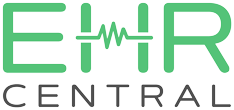Types of Headache and Notable Factors in Treatment
The statistics indicate that over 15% of people in the US suffer from severe headache and migraine. Moreover, 18% people complained about headache more than once in a month. Daily use of medication is not advisable since it leads to rebound headaches.

A headache is a common pain which can afflict people of any age depending on the individual and their environmental exposure. As a headache specialist who has treated children and adults for over 20 years, I have been able to help find root causes to assist in treatment.
What Causes a Headache?
There is a wide range of factors and types headache. These factors indicate different origins, and associated factors, like chronic illnesses or diseases. This diagram shows the most common causes and the resultant frequency and location of the pain.

Do you carry any of these symptoms?
Frequently Asked Questions on Headache
What can we do to find a cure?
When the work/life balance is in place and we give our bodies adequate rest, then headaches should not occur. However, if we work and neglect eating healthy or exercise then we start showing signs that our body is overworked and fatigued.
If despite having a balance between work and leisure, we have headaches, then we can isolate the varying types and tension, with stress and anxiety as some of the leading causes. Monitor and write down frequency over a period of one month and note time of day, symptom and hours of sleep.
What are the RED FLAGS For dangerous headaches?
- Headaches related to head injury with or without loss of consciousness.
- Headaches with fever that are not resolved with Tylenol or Advil.
- Headaches associated with severe intensity of sudden onset.
- Headaches associated with weakness on facial muscles or body weakness.
- Headaches with loss of vision and speech impairment.
- These are situations when you need urgent evaluation from medical doctor.
When is an MRI or CT scan needed?
Consulting your doctor can help identify the causes and decide if imaging is needed for diagnosis. The brain that may not be the only part need to be scanned. Headaches and migraines cannot be confirmed from the test and diagnosis made by clinical examination.
What medication can I use?
Daily use of medication is not advisable since it leads to rebound headaches.
Acute Headache: Typically, most pain relievers are over the counter (OTC) such as Acetaminophen, Excedrin, and Ibuprofen. Prescription meds like Triptans, Ergotamine and newer CGRP blockers-oral tabs for acute use.
Severe Migraines (15+/month): Preventative medication can be discussed with your doctor, which can include antihypertensive, anticonvulsants, antidepressants, CGRP blockers – once a month injectable, and Botox-injected every 3 months.
Additionally, daily stretching, yoga, exercise may help muscle tension headaches. Other herbal and natural supplements may benefit for some patients. Refreshing sleep is another key component in reducing headache frequency.
Get a prescription from a specialist
The statistics indicate that over 15% of people in the US suffer from severe headache and migraine. Moreover, 18% people complained about headache more than once in a month. Stress is one of the most prevalent factors triggering migraine with 62% reporting it. The occurrence of headache is twice likely in females as compared to adults.





